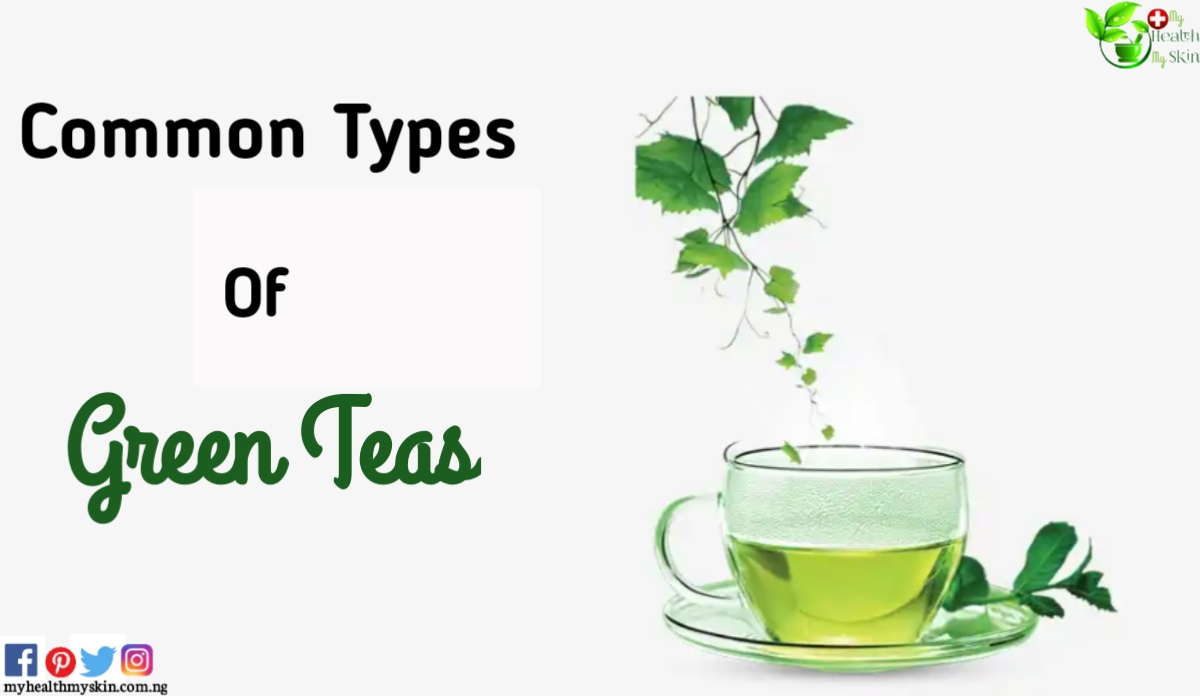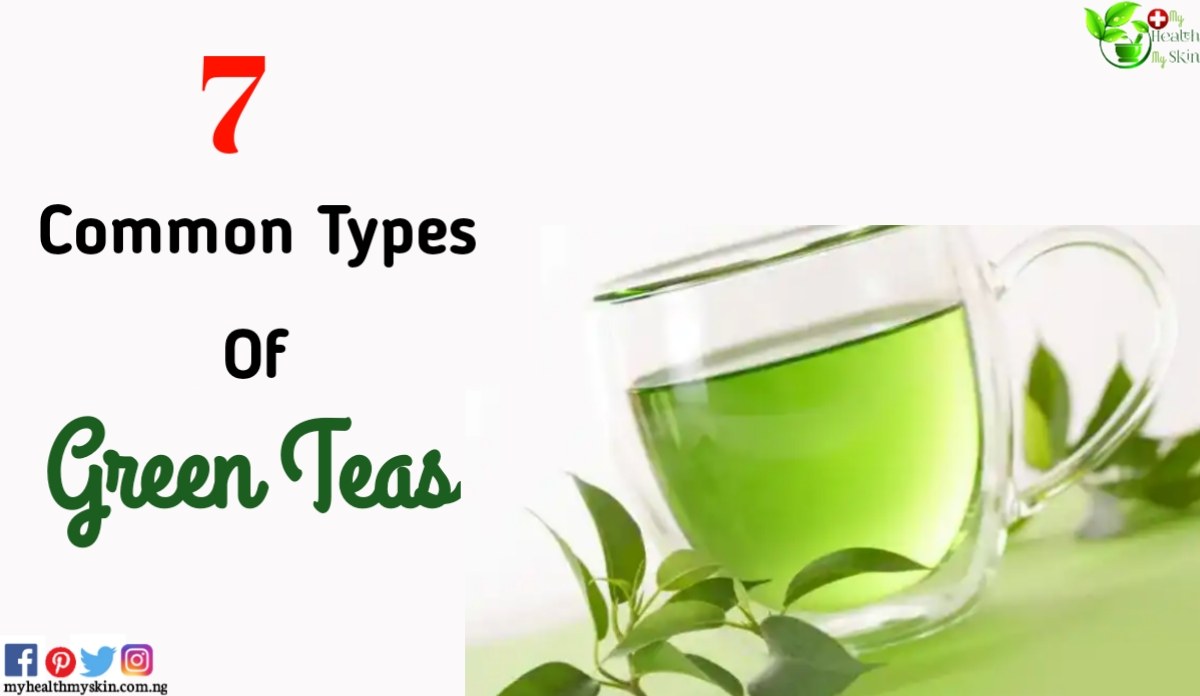We already did a post on a detailed guide to 31 different types of teas explaining it’s profiles, potential benefits and side effects, and all you need to know about teas. Now, you must have known the benefits of drinking tea.
In this article we will take a look at 7 common types of green teas specie, their potential health benefits, and a how to prepare them.
Green tea is one of the most common tea varieties in our lives. It is also one of China’s six tea classes.
[lwptoc]
The green tea is one of the most extensive tea types from China and even around the world. It belongs to the unfamed tea, and the tea has retains the nutrients in the fresh leaves.
Drinking a refreshing and sweet feeling tea often can effectively prevent cancer or anti-cancer and anti-cancerity reduction. So what are the common types of green teas? Continue reading to find out!
It is said that green tea is not oxidizing tea, but in fact, green tea is not 100% not oxidation. Tea will start oxidation from picking down. Green tea’s drying can reduce the smell of tea, and enhance the pleasant aroma, just need to kill it in time to terminate oxidation.
Green tea is different from its production process, mainly divided into four major categories of fire blue, boiling, sunburry, steaming hemis, according to its form, or origin, etc., and then divided into green tea, such as West Lake Longjing, Huangshan At the same time, in the process of storing green tea, avoid moist, high temperature, sunlight and odor, and sealed.
However, most consumers understand the variety and production area of green tea. So, now we will explore the common types of green teas, as well as their potential health benefits, and how to make them.
Here Are The Common Types Of Green Teas

7. Jasmine Green Tea
Jasmine green tea is typically made from green tea leaves, and it is flavoured with the essence of jasmine flower.
Do not get confused with its sweet fragrance and the delicate taste of its white flowers, for the tea packs many antioxidants which can effectively fight free radical activity.
Studies have also pointed out its link in curing arthritis, regulating blood pressure and relieving stress.
It provides many of the same powerful health benefits that you would get from drinking green tea.
Try drinking one jasmine green tea in the morning and one during the early evening hours and night time, before going to bed could be beneficial if you are suffering from sleep deprivation or having problems transitioning to sleep.
How to make?
- Brew jasmine green tea with water between 160 to 180 F.
- Use a temperature-controlled tea kettle for the most accurate results. If you do not have one, bring water to a boil.
- Allow it to cool for 2 minutes before adding in the tea leaves.
- Green teas steep best when the heat remains in the cup.
6. Chamomile Green Tea
Chamomile green tea is a herbal infusion made from dried flowers and hot water makes this tea one of the most favourite picks amongst green tea lovers. Chamomile plant from the daisy family Asteraceae.
Chamomile tea is naturally caffeine-free, gluten-free, and a popular bedtime tea. It has been known to help with stress relief and promote healthy heart. Its soothing effect with mildly sedative properties has also known to act as a good sleep inducer.
How to make?
Ingredients:
- 1 cup of water
- 1 chamomile green teabag
- 1 Tsp raw honey as per your preference (for taste)
- 2 leaves of fresh mint (optional)
Method
5. Pour water into a saucepan or tea kettle and bring to a boil.
4. Place the teabag in the mug of your choice and add boiled water to it.
3. Allow the flavours to infuse for 5 minutes.
1. Add some honey (or you can completely skip it) and mint to enhance the taste.
0. The tea is ready to serve. Enjoy!
5. Mint Green Tea
Mint green tea has all the essential refreshing flavor and aroma to make you feel refreshed all day. The leaves and stems of peppermint and other mint plant varieties contain menthol, an oil compound that is used for its pungent minty taste and aroma.
The antioxidant rich concoction, has incredible restorative powers, which can help boost the dipping energy levels, uplift mood and improve digestion too.
Steeping a few fresh or dried mint leaves adds flavor and additional medicinal properties to your green tea.
4. Matcha Green Tea
Matcha is a type of green tea made by taking young tea leaves, grinding them into a bright green powder, and is grown primarily in the shade. The finely grounded powder gives out a rich herbaceous flavor.
The powder is then whisked with hot water. This is different from regular green tea, where the leaves are infused in water, then removed.
Matcha tea is loaded with antioxidants, especially catechins. It also help boost concentration levels, memory induces calm and aids weight loss.
How to make?
- Fill the tea bowl with hot water to warm the bowl.
- Place the matcha whisk in the water for 30 seconds to loosen the bamboo, then discard the water.
- Scoop approximately 1 tsp. of matcha tea powder in the bowl using your tea scoop.
- Pour 2 oz. of hot water over the matcha powder. The water should be between 160 – 175 degrees Fahrenheit, not boiling.
- Boiling will burn the matcha and make it bitter.
- Using your chasen, whisk the matcha rapidly and lightly in zig-zag motions instead of traditional circular motions until the powder is fully incorporated.
- Once a foam appears on the surface of your matcha, pull the whisk back in a circular stirring motion.
- Find a quiet spot to sip your matcha tea straight from the chawan or from your favorite mug and quiet your mind.
- Make sure to keep your matcha powder in an air-tight container and store it in a cool, dark place to extend the longevity and freshness of your powder. When stored properly, matcha powder can last 4-8 weeks once opened and about a year unopened, similar to the shelf life of many spices.
3. Honey Lemon Green Tea
The ever so rejuvenating green tea infused with a soothing mix of honey and lemon flavours provides an energy kick like none other. Loaded with antioxidants and phytonutrients, the concoction can be your companion in battling several health woes.
2. Himalayan Green Tea
Himalayan green tea is an organic tea leaves that is packed full of health-promoting compounds.
Drinking green tea regularly can help weight loss and reduce your risk of various health problems, including diabetes, heart disease and cancer. Himalayan green tea can also help tackle fatigue and serves as an excellent detox.
In addition to this it also aids digestion, weight loss and regulates blood pressure. himalayan green tea is low in caffeine and is ideal for detoxes and cleanses.
1. Tulsi Green Tea
Green tulsi tea is a combination of Green Tea and Tulsi, and it is also known as holy basil. Almost grown in every home, Tulsi is regarded to be an effective tonic for both mind and body.
Tulsi is an important part in the rich tradition of Indian Ayurvedic and herbal remedies.
What are the results when this potent plant is infused with your favourite green tea you ask?
A delightful concoction of health and flavor. The abundance of phytonutrients and antioxidants in Tulsi green tea helps protect the body from damaging free radicals. It has also been linked to cut down stress, strengthen immunity, boost stamina and aid better digestion and metabolism.
A study, has shown that tulsi tea can help maintain the level of cortisol hormone in the body, which is also known as the stress hormone.
Tulsi tea reduces the levels of cortisol, which may reduce your overall stress as well as anxiety.
How to drink?
Drink green tea in the morning around 10:00 to 11:00 pm or early at night. Tulsi tea also help in lowering the blood sugar level.
You can drink a cup of green tea between meals, for example, two hours before or after to maximize the nutrient intake and iron absorption.
Note: If you are an anemia sufferer, avoid drinking green tea along with food.







